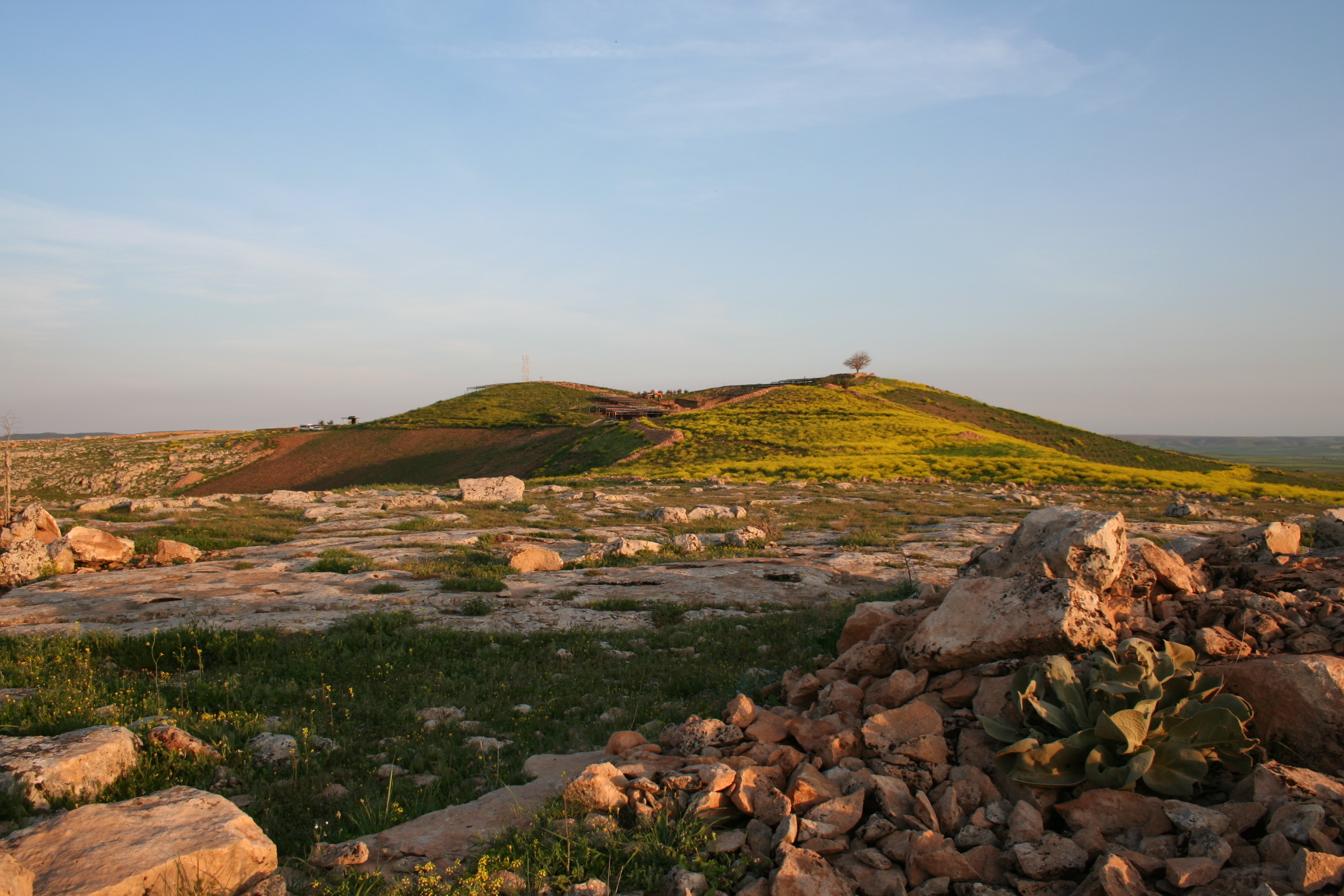
Göbekli Tepe seen from the southeast (Photo: K. Schmidt, DAI, DAI-IST-GT2009-KS-8252).
Göbekli Tepe is situated a few kilometres to the northeast of the modern town of Şanlıurfa in southeastern Turkey and is situated on one of the highest points of the Germus mountain range towering ca. 770 m above the Harran plain. The mound, which is completely artificial, is spreading on an area of about 9 ha, measuring 300 m in diameter. This immense ruin hill was formed of the debris of monumental constructions dating back to the mid-10th and late-9th/early-8th millenium cal. BC. Göbekli Tepe (i.e. the time between 9500/9250-8000/7750 cal. BC) was first noted as an archaeological site during a combined survey by the Universities of Chicago and Istanbul in the 1960s (Benedict 1980 – external link) due to its remarkable amount of flint flakes, chips, and tools, but the architecture the mound was hiding remained unrecognized until its re-discovery in 1994 by Klaus Schmidt, Murat Akman and Michael Morsch. Excavations started the following year and are still ongoing. Excavations were first directed by Klaus Schmidt until his untimely death in 2014. The directorship of the excavations then passed on to the Şanlıurfa Haleplibahçe Museum as formal head of excavation with Lee Clare as field director. In 2020 Necmi Karul became head of the excavation who is also head of excavations at the early Neolithic site of Karahantepe in the Tektek mountains and Lee Clare remained as field director on-site.
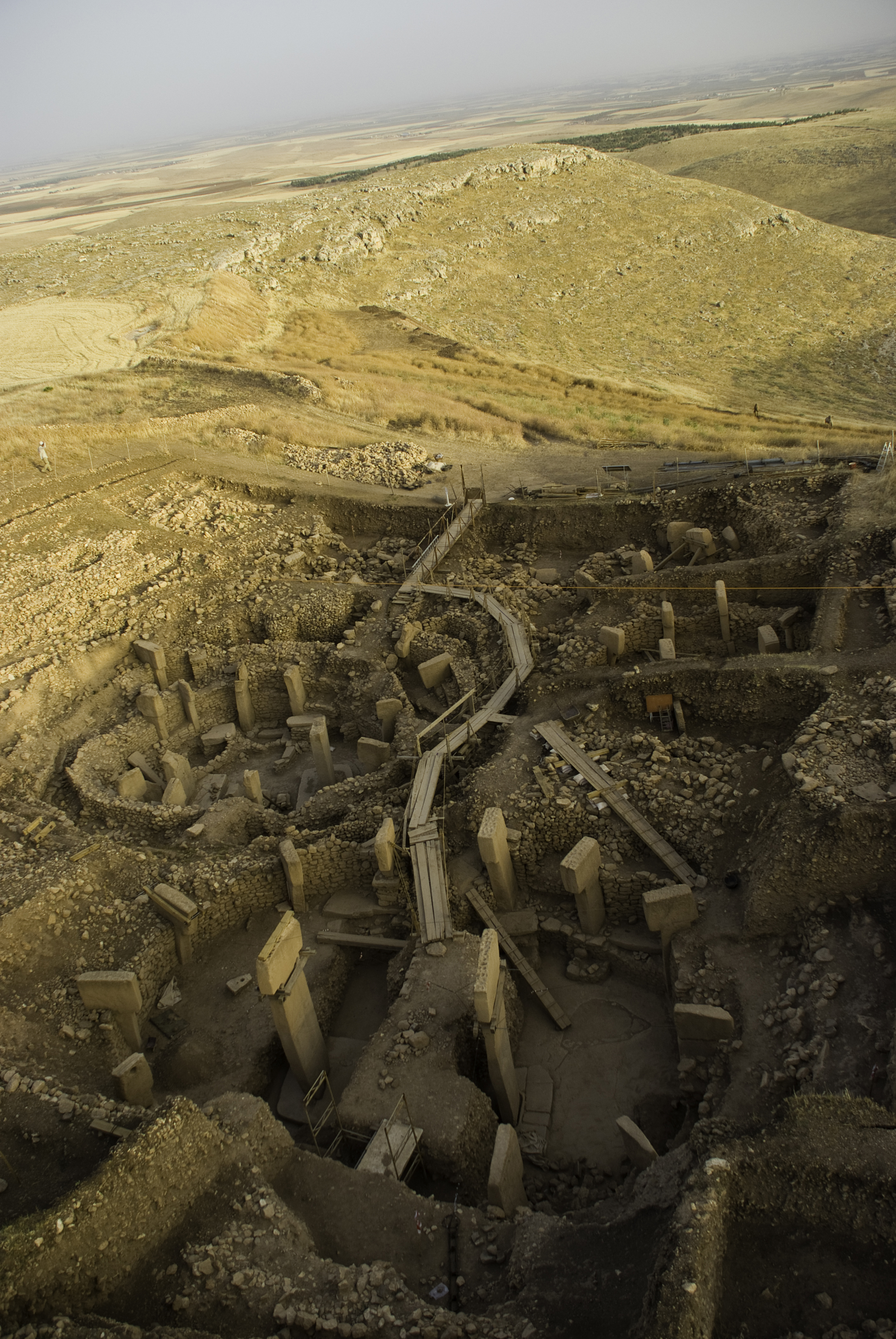
Main excavation area with monumental special buildings (Photo: N. Becker, DAI).
Based on the small finds, for example el-Khiam points, Byblos points or Naviform cores as well as radiocarbon dates Göbekli Tepe was dated to the PPNA and PPNB and intial results of the excavations allowed for distinguishing a tripartite sequence at the site with Layer III being the oldest dated roughly to the PPNA, Layer II being younger and dated to the PPNB and Layer I as a mixed horizon (PPNA and PPNB finds) due to ploughing. However, recent research rather points towards a multiphased site which can no longer be explained by a simple tripartite sequence. This in itself is not unexpected as excavations are now running for around 30 years and much more information on the formation of the site is now available. Based on the at the moment available information on site formation processes it is clear that the oldest buildings have to be dated to the mid-10th millenium cal. BC (PPNA). This time-horizon features small round to round-oval buidlings as well as big round-oval buildings, some of them measuring up to 20 m in diameter. Moreover, the monumental special buldings feature monolithic T-shaped pillars (also called T-pillars) weighing tons. Smaller T-pillars (up to 3 m high) were placed in and interconnected by limestone walls as well as benches. In Addition, two bigger T-pillars (up to 5.5 m high) were placed in the centre of the special buildings.
The T-shape of the pillars is clearly an abstract depiction of the human body seen from the side. Evidence for this interpretation are the low relief depictions of arms, hands and items of clothing like belts and loincloths on some of the pillars. Often the pillars bear further reliefs, mostly depictions of animals, but also of numerous abstract symbols. To the spectrum of finds adds a wide range of sculptures of humans and animals.
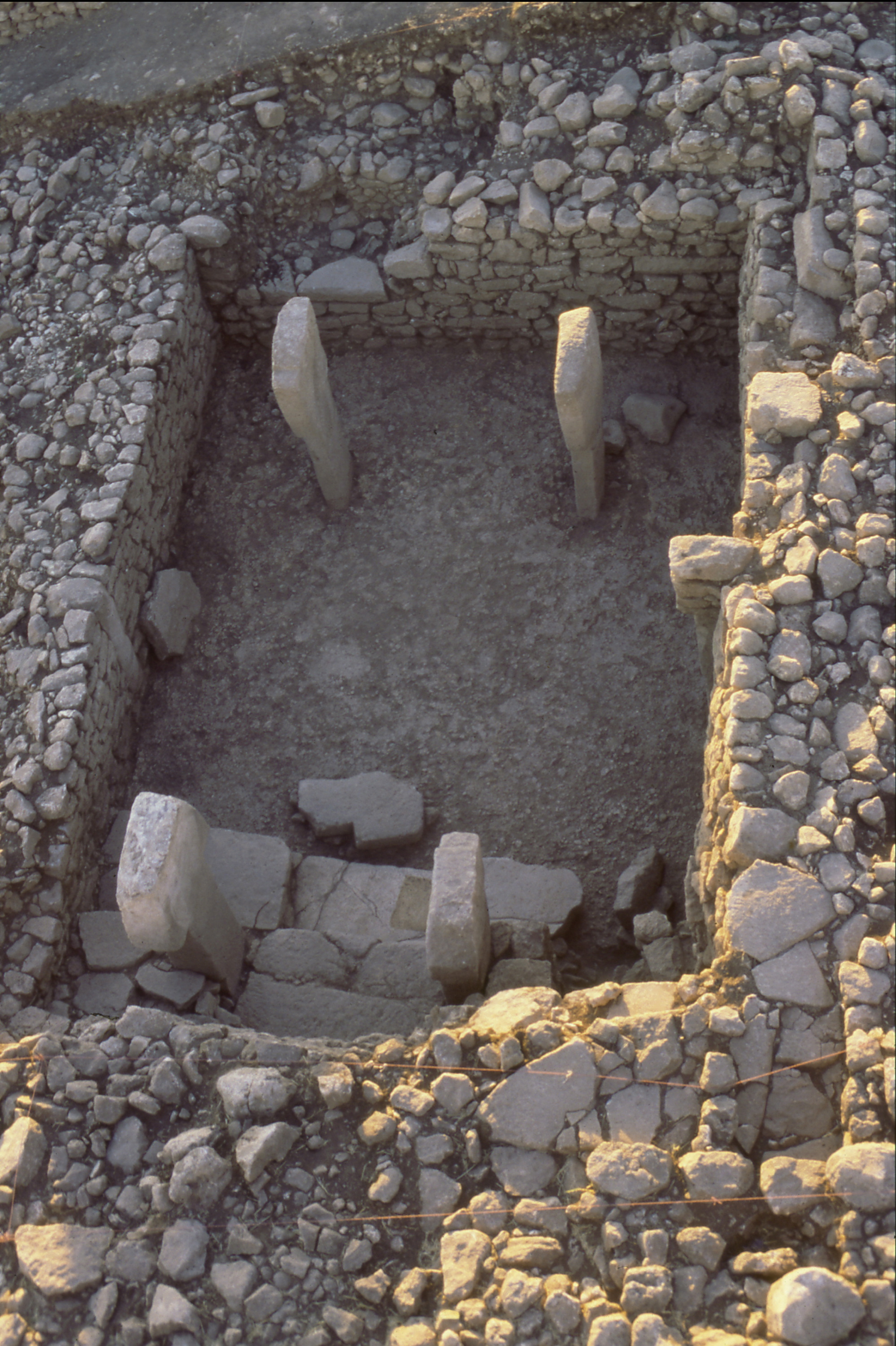
So-called lion-pillar building from the younger Layer II (Photo: K. Schmidt, DAI).
Besides round-oval special buildings with up to 5.5 m high T-pillars there are also rectangular buildings with even smaller T-pillars. These special buildings are usually dated to the mid-9th millenium cal. BC (PPNB). In most cases only the two central pillars remain, the biggest measuring around 1.5 m. The overlying ploughed sediments cannot be dated well as they are basically big accumulations of sediments at the hill flanks, which were produced partly by natural erosion, but mainly by modern farming activities at the ruin hill.
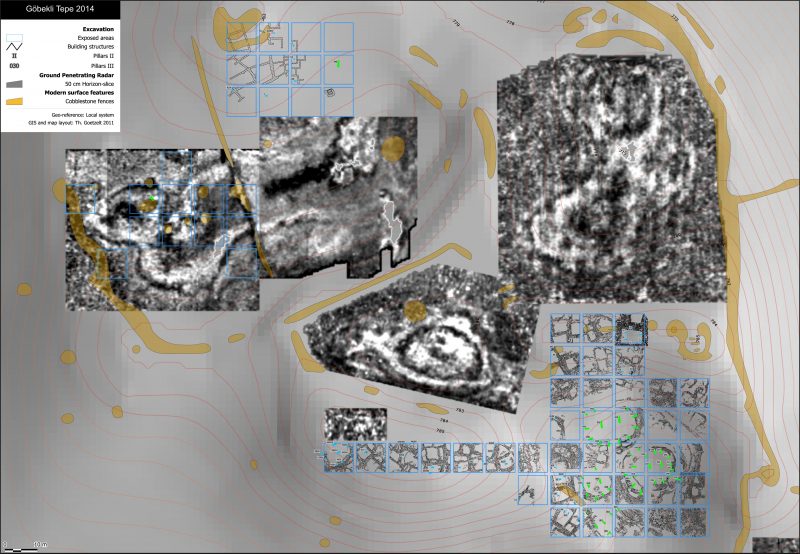
Map of Göbekli Tepe excavation and surveys by ground-penetrating radar (Plan: Th. Götzelt, DAI).
The special buildings are the most impressive part of Göbekli Tepe´s archaeology. A geomagnetic survey, including ground penetrating radar proofs that these special buildings were not restricted to a specific part of the mound but existed all over the site. More than ten large special buildings were located on the geophysical map additionally to those already under excavation – numbered A to I in the order of their discovery. Five of these monumental structures, A, B, C, D and G were discovered in the main excavation area at the mound’s southeastern hollow one, special building F, at the south-western hilltop and another one, special building E, at the western plateau. Special building H and I lie on more recently excavated areas in the northwestern part of the site. Two special buildings, C and D, could be excavated to ground level in recent campaigns. Special buildings D may serve as good example here to characterize the general layout and character of Göbekli Tepe’s older circular to elliptic special buildings.
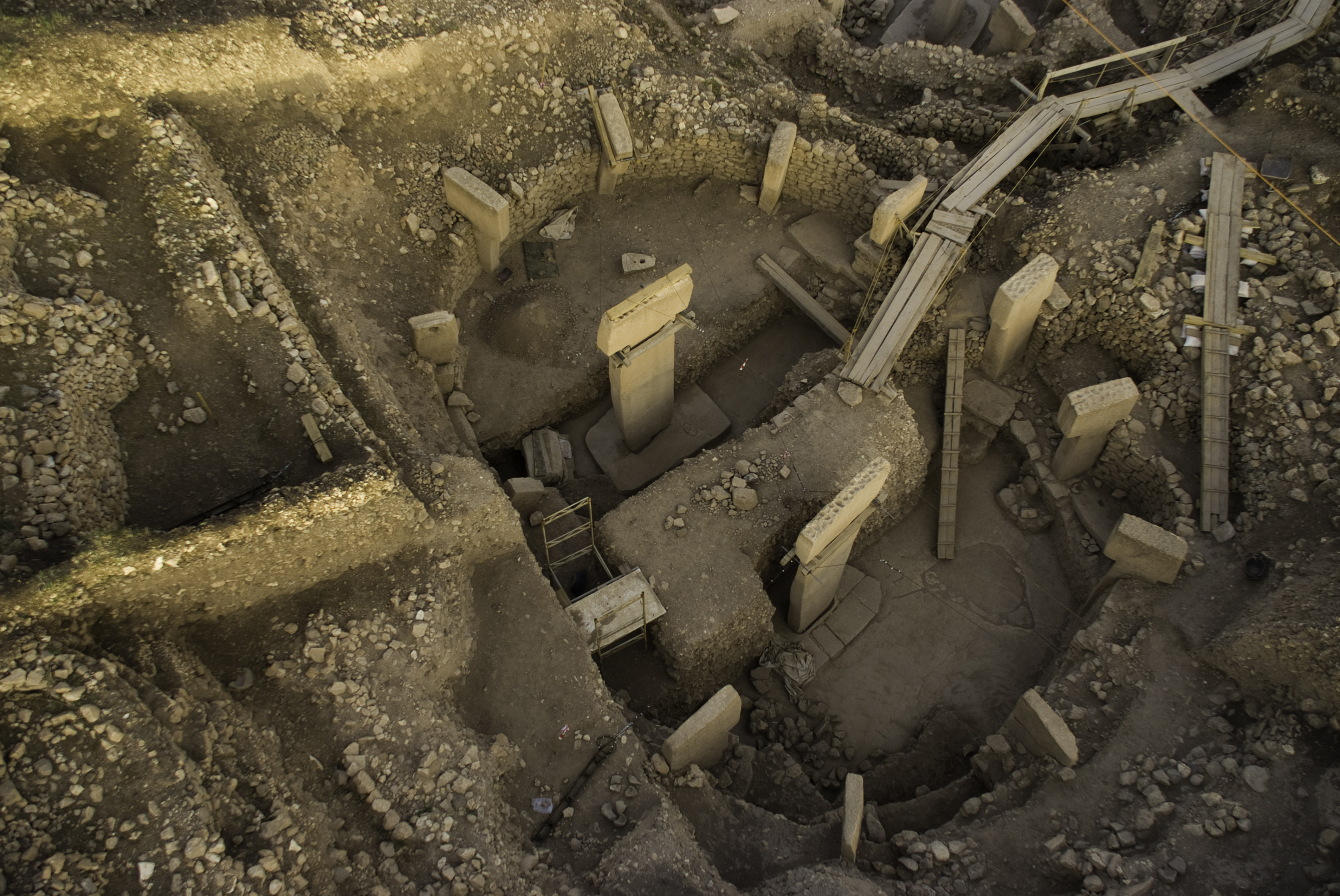
Special building D (Photo: N. Becker, DAI).
Special building D is the largest and best preserved so far. Two huge central T-pillars are surrounded by a circle formed by – at current state of excavation – 11 T-pillars of similar shape. Most of these T-pillars are decorated with depictions of animals, foxes, birds (e.g. cranes, storks and ducks), and snakes being the most common species in this enclosure, accompanied by a wide range of figurations including the motives of boar, aurochs, gazelle, wild donkey and larger carnivores.
The two T-pillars in the centre of this special building, measuring about 5.5 m in height and weighing some 8 metric tons, are founded in only 20 cm high pedestals, which are – like the rest of the floor level – carved out of the carefully smoothed bedrock, and, in one case, decorated with a relief frieze of ducks.
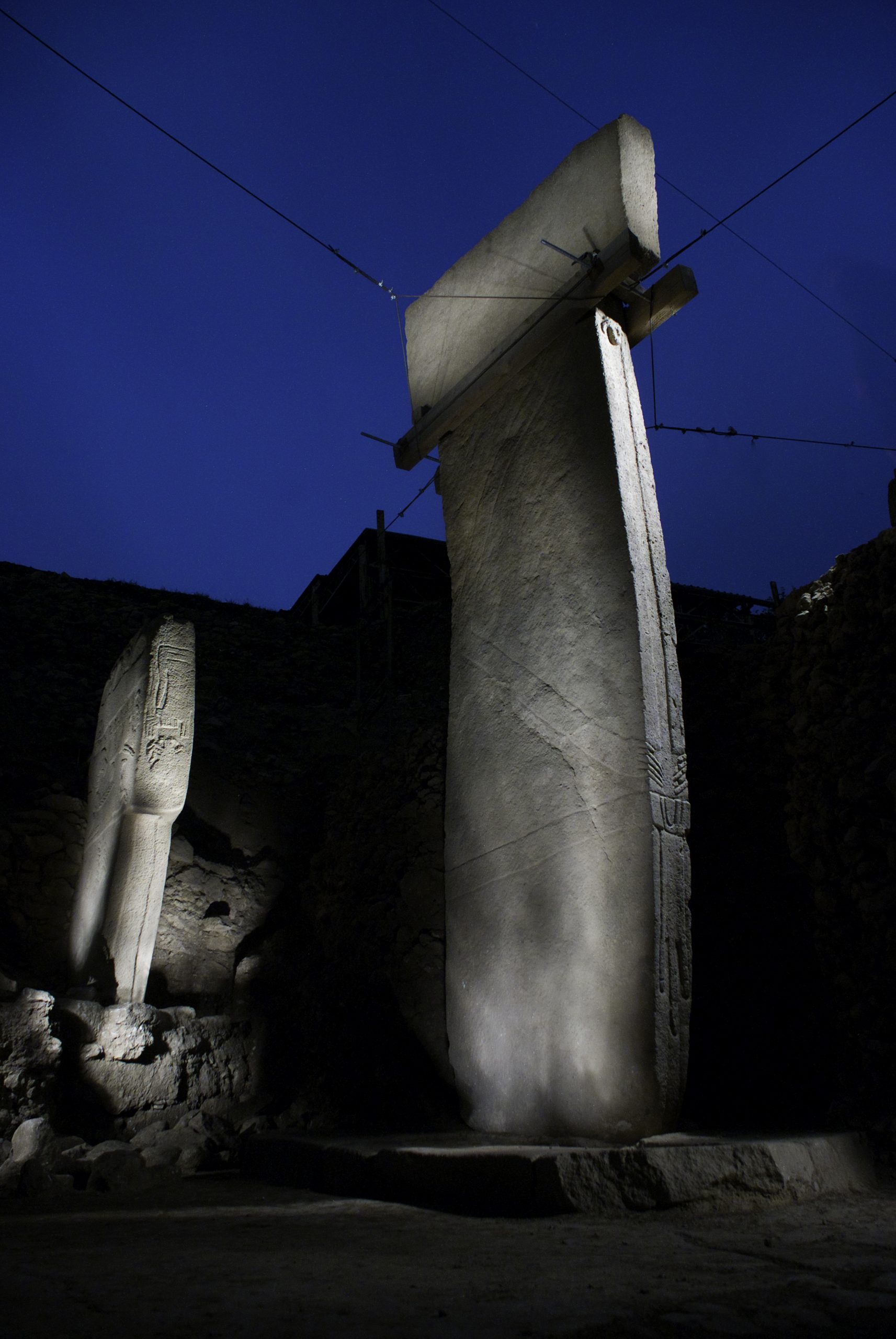
(Photo: N. Becker, DAI)
In particular these central T-pillars of special building D allow demonstrating the anthropomorphic appearance of the T-pillars. The oblong T-heads can be regarded as abstract depictions of the human head, the smaller side representing the face. Clearly visible are arms on the pillars’ shafts with hands brought together above the abdomen. The depiction of belts and loincloths in the shape of animal skins underlines the impression that these T-pillars own an anthropomorphic identity and therefore should be regarded as pillar-statues more precisely. Some small bones from a foxtail found in front of one of the central pillar’s hints at the presence of a real fur here once, maybe as some kind of offering or indeed to be understood as a genuine counterpart to the loincloth depicted.
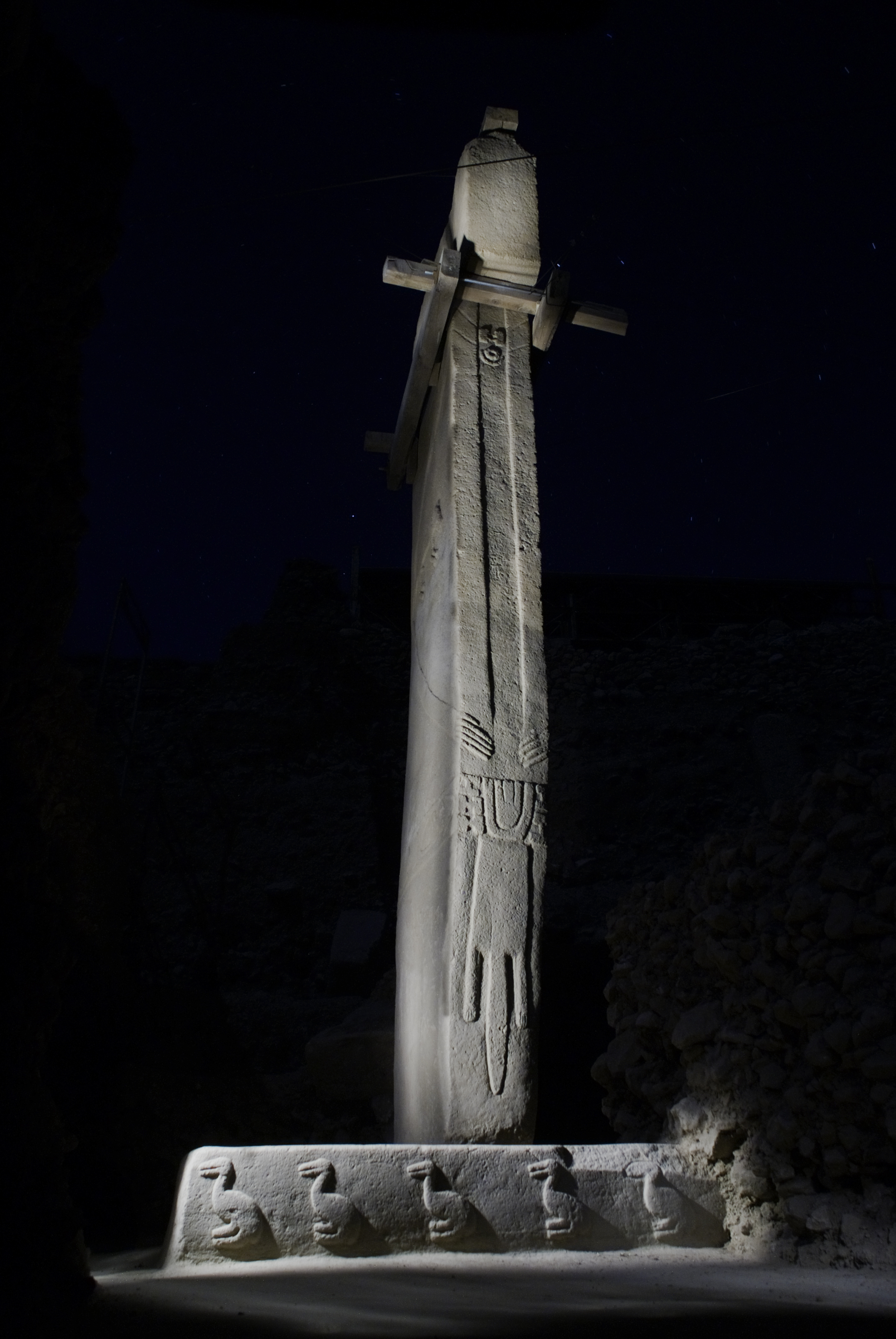
Eastern central T-pillar of special building D (Photo: N. Becker, DAI).
Since this relief of a loincloth is covering the genital region of the T-pillar-statues, we cannot be sure about the gender of the two individuals depicted in the centre. But some help may come from the clay figurines from the PPNB site of Nevalı Çori (Morsch 2002 – external link) about 50 km north of Göbekli Tepe, now flooded by the Atatürk dam reservoir. Apparently, of those figurines depicting both, male and female individuals, only the male ones are wearing belts. Thus, it is highly probable to assume that the pair of T-pillars in special building D should represent two male individuals, too. Indeed, it seems striking that the iconographic and symbolic world present at Göbekli Tepe is one dominated by masculinity. Whenever the gender of one of the animals depicted is indicated, it is a male specimen. Among the depictions of human beings, ithyphallic individuals are numerous. The hitherto only known clearly female depiction is a graffito on a stone slab in one of the younger rectangular special buildings. It is, however, not clear if this graffito was part of the original decoration of that room or added later on.
Recent Comments